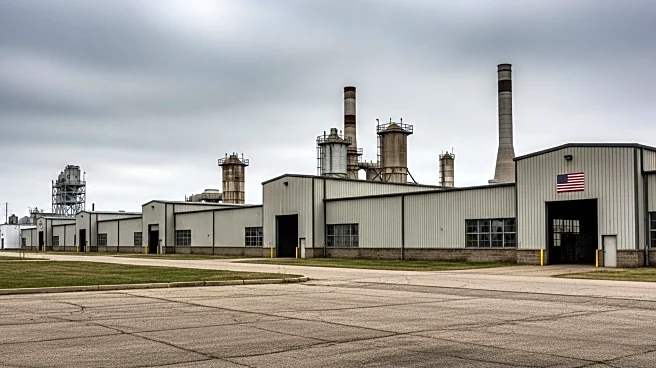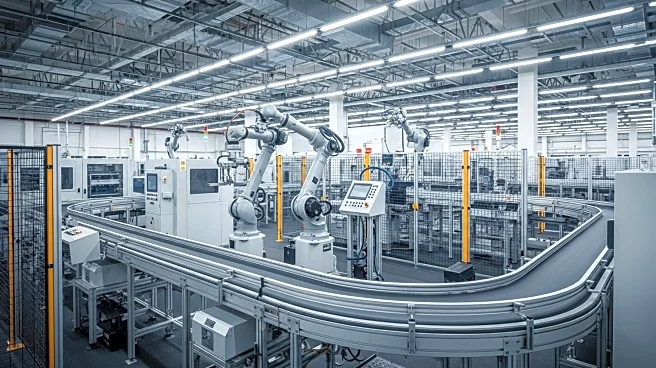What's Happening?
The U.S. manufacturing sector is facing significant challenges due to evolving immigration enforcement policies. These policies are affecting labor availability, particularly in industries reliant on immigrant workers such as construction and manufacturing. A report from the Brookings Institution highlights potential outcomes under different immigration scenarios, with a 'low' policy scenario leading to a net outmigration of 650,000 individuals, exacerbating labor shortages. Conversely, a 'high' immigration scenario could stabilize labor markets with a net inflow of 1.3 million immigrants. The aging U.S. population and declining birth rates further amplify these vulnerabilities, as immigrants fill critical roles in sectors essential for economic competitiveness.
Why It's Important?
The impact of immigration policies on labor availability is crucial for the U.S. manufacturing sector, which is a cornerstone of global supply chains. Stricter enforcement could disrupt supply chains reliant on immigrant labor, leading to increased operational costs and reduced output. Companies are responding by recalibrating hiring practices, investing in workforce development, and advocating for immigration reforms. These strategies aim to attract immigrant talent and mitigate disruptions caused by regulatory uncertainty. The Economic Policy Institute suggests that such reforms could enhance productivity and wage growth for both native-born and immigrant workers.
What's Next?
Multinational manufacturers are diversifying workforce strategies to buffer against labor disruptions. This includes expanding recruitment beyond traditional immigrant corridors, investing in automation, and forming partnerships with educational institutions to upskill domestic workers. Companies in sectors like automotive and electronics are integrating AI-driven logistics systems to maintain output levels despite labor shortages. Investors should monitor how firms address immigration-related risks, prioritizing those that demonstrate resilience through geographic diversification, technology adoption, and policy engagement.











